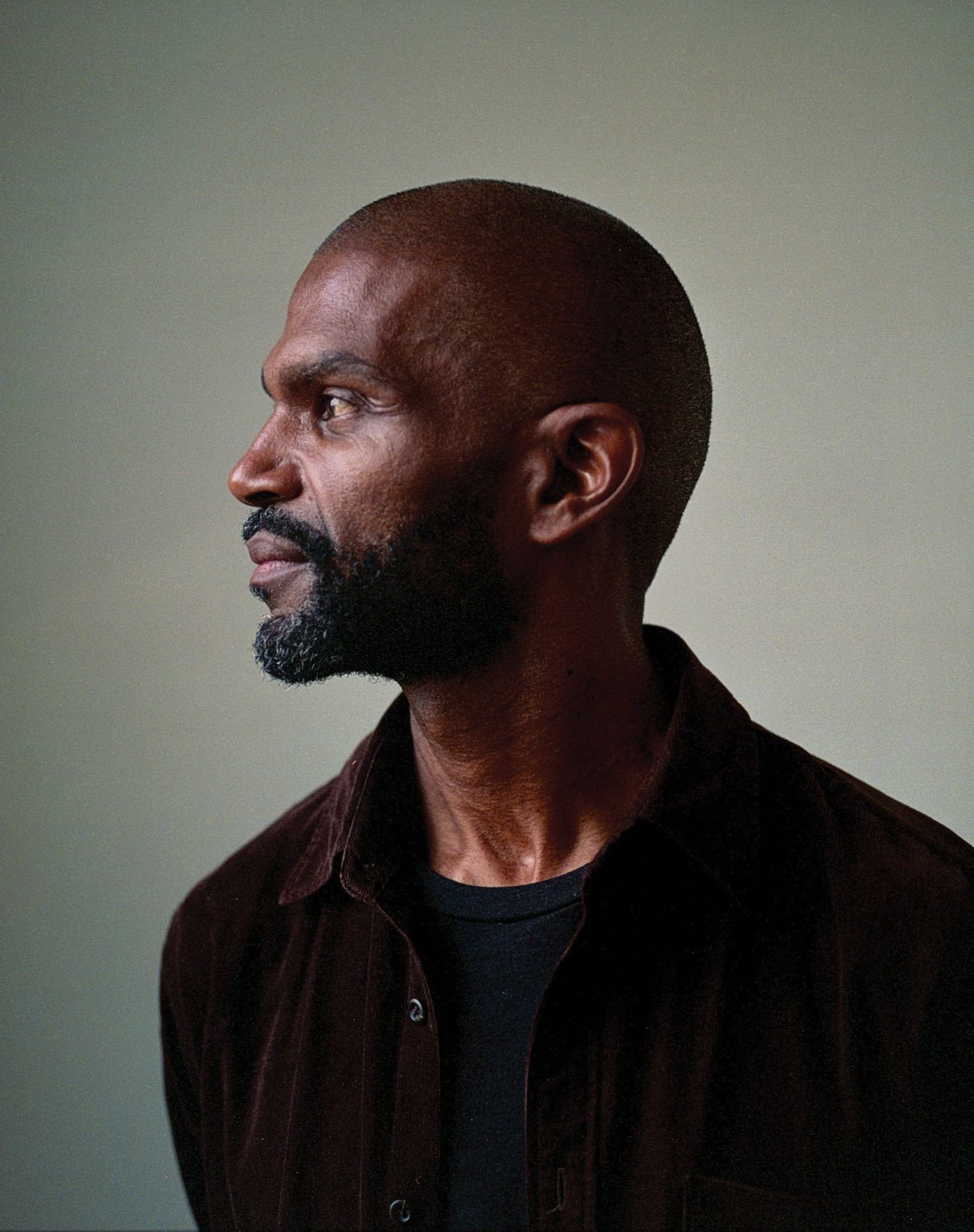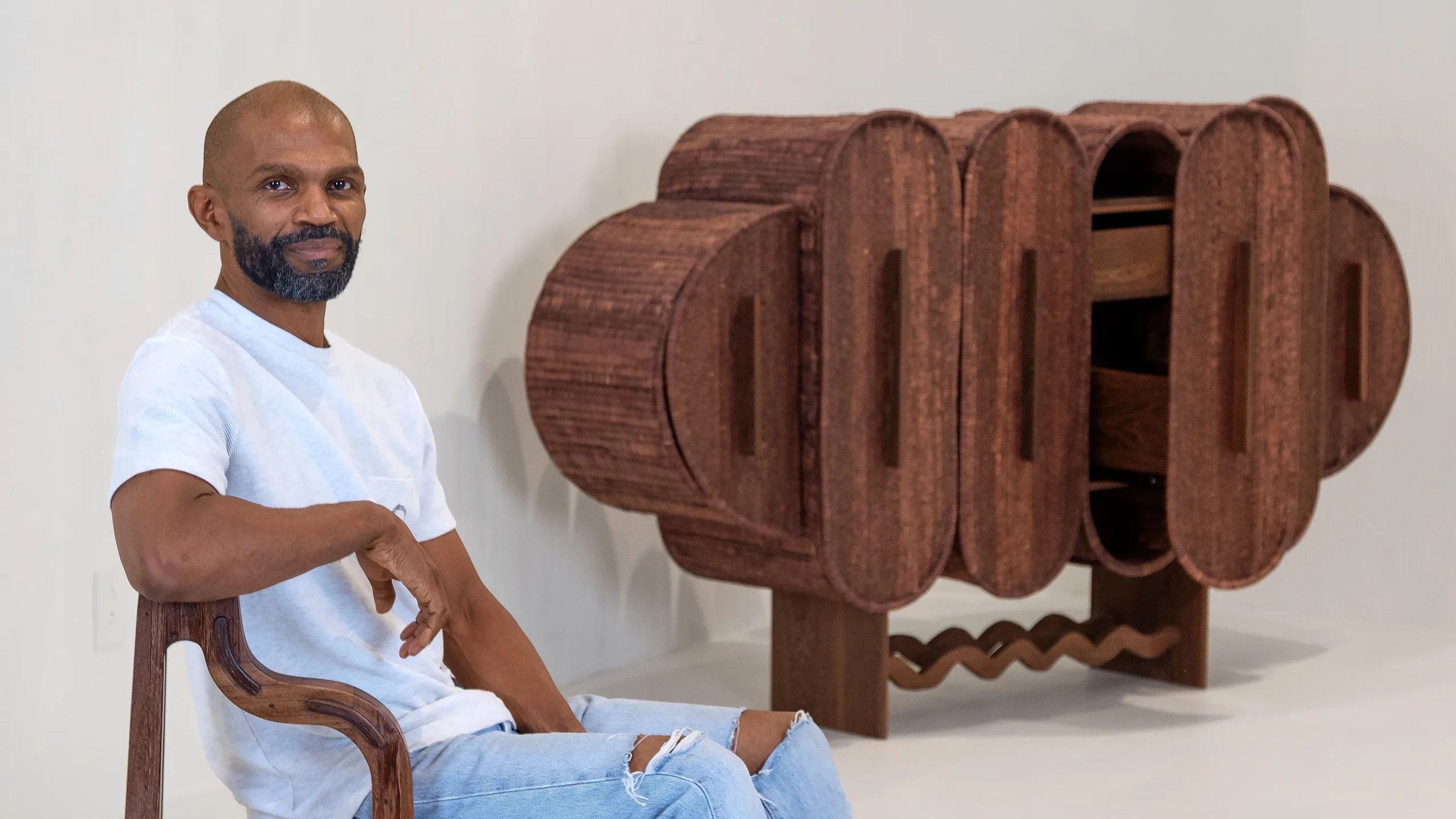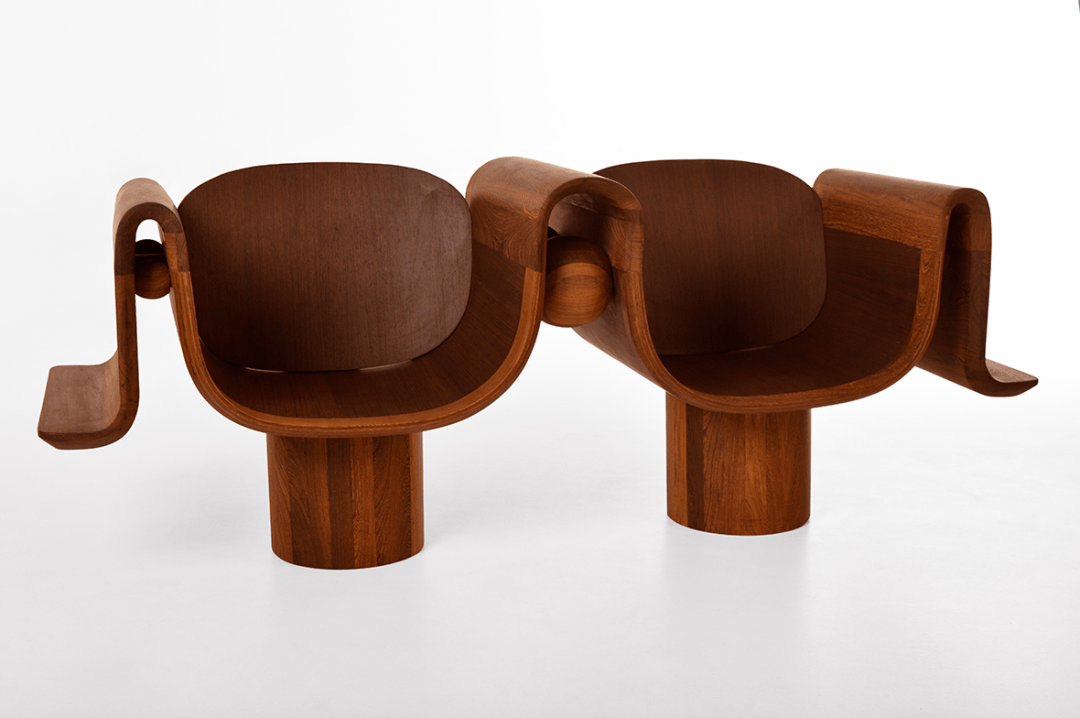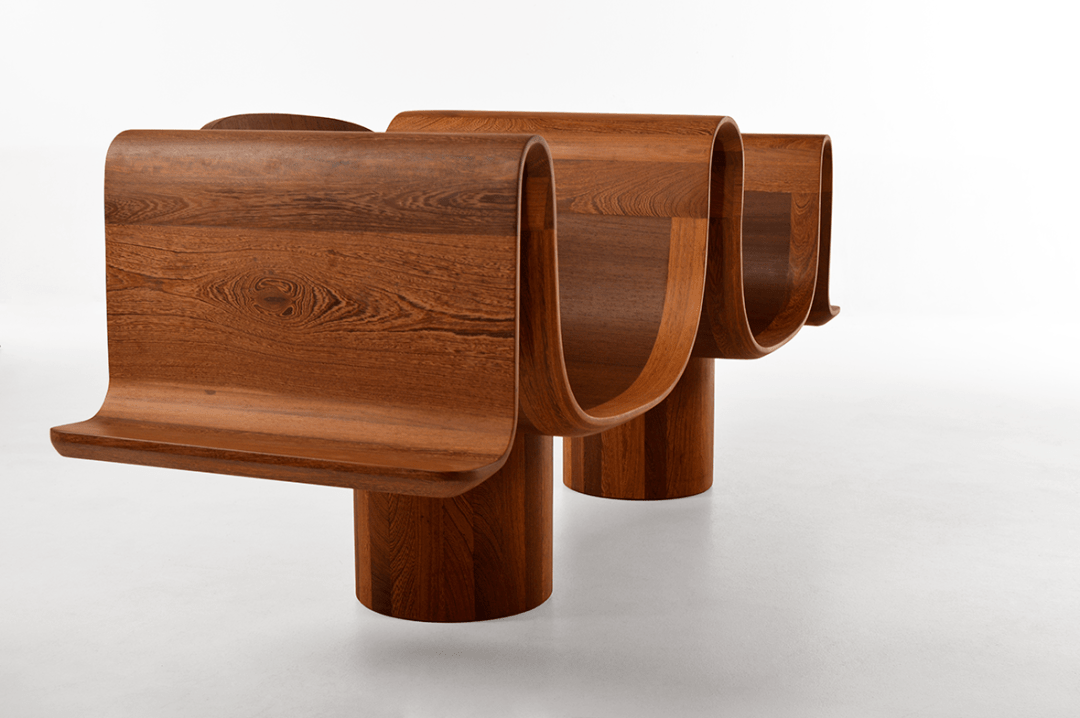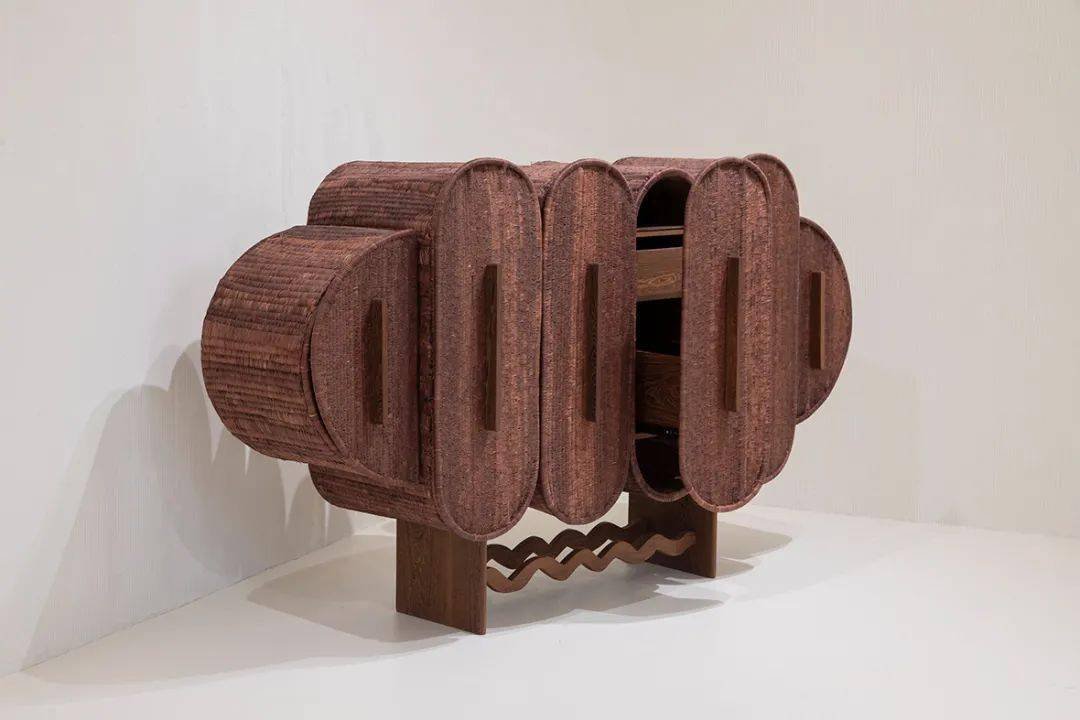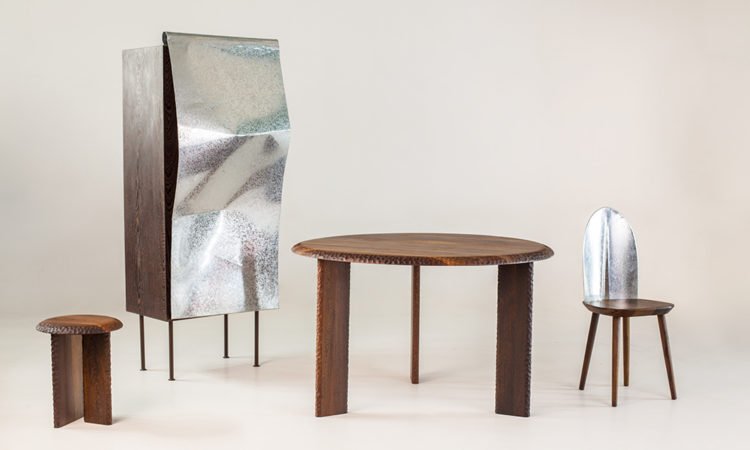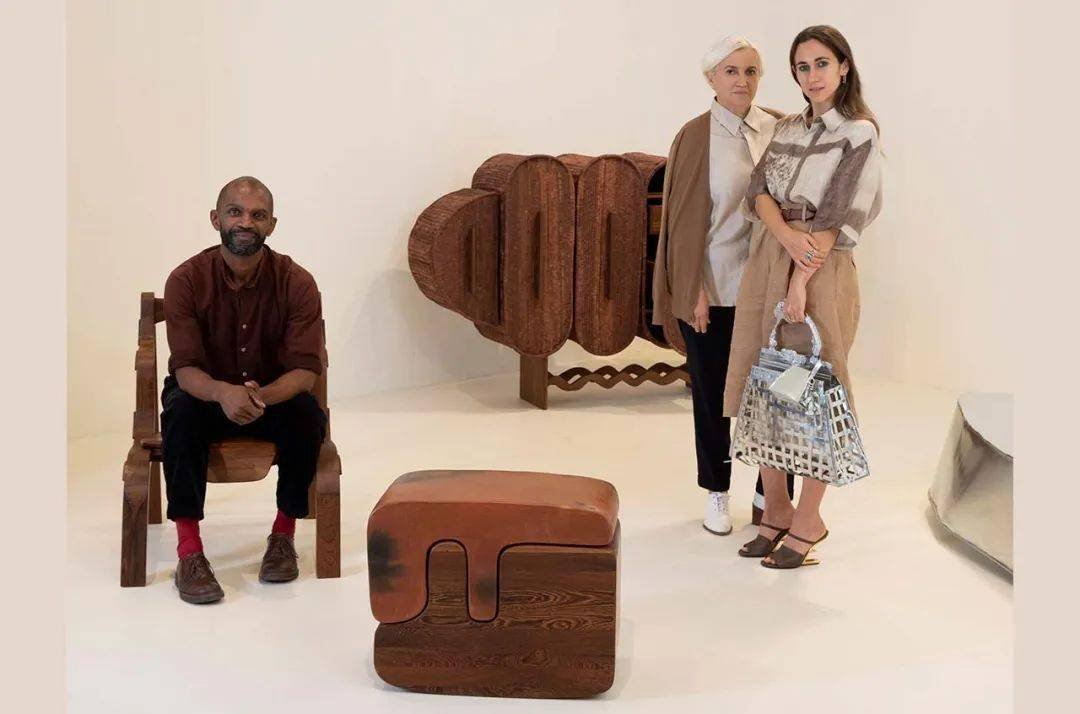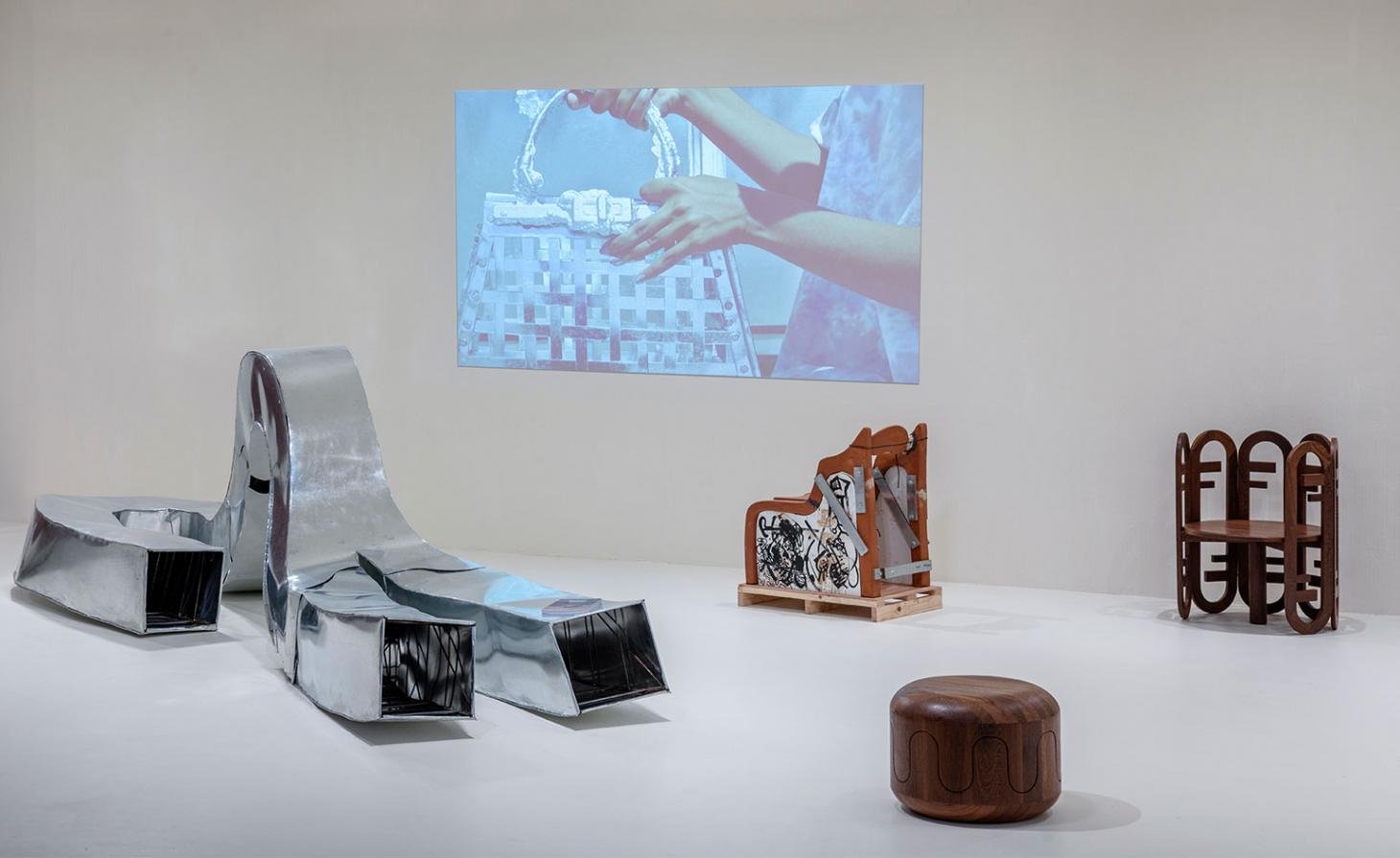Peter Mabeo | Designer Peter mabeo and the power of African cultural design
theFOUND Virtual Art Center this TALK with Peter Mabeo, founder of Mabeo design brand. Mabeo is a furniture and accessories brand from Botswana, Africa. Peter Mabeo, a furniture designer born in Botswana, has a curious heart. After 10 years of customizing furniture for local commercial projects, he began his own practice to find something deeper. Mabeo furniture cooperated with Patty Johnson to become the international focus in 2006, and then established Mabeo studio. Since then, Mabeo studio has been in contact with the design industry, cooperating with some of the best designers on major projects and developing more and more products.
The goal of the brand is to provide the works of African artisans to the world in a thoughtful way to reflect certain qualities - the basic simplicity of form, the concept of purity, the careful use and handling of natural materials, the professionalism of artisans and women, and the sensitivity of cooperative designers to Africa's rich aesthetic heritage. Mabeo's works have found new homes around the world, including nobis hotel in Stockholm, Giulia hotel in Milan, Mercedes Benz restaurant in Hong Kong and Andaz Fifth Avenue Hotel in New York. Although Mabeo has won global recognition, he still maintains deep ties with his motherland and regards his success as an opportunity to rewrite people's preconceptions about the craft of his motherland.
The "kompa collection" series jointly launched by Mabeo and Fendi includes ten pieces of furniture, all of which use local handicrafts. Peter Mabeo is exploring the future of furniture in the world. Mabeo, 49, said: "rural life is calm and slow, far away from the aspirations of developing countries and all their costumes." His own ambition extends to the production of thoughtful handmade furniture based on African heritage. In 2018, he worked with Vincent van Duysen, a Belgian architect, to create panga panga wood carvings that highlight regional hand carving techniques. "I like the idea of designing a series of low stools and side tables to provide work for local craftsmen in Botswana," said Van Duysen, who joined the Mabeo roster with international luminaries Patricia ouquiola and clarson coivesto roon. But the brand also taps into the talent and handicraft traditions of nearby Mozambique, Malawi and Zimbabwe. Mabeo said that the idea is only to broaden the vision of African design. "The art of patience, ease and instinct is the quality that those who have no experience in the field of design can provide," he suggested.
theFOUND & Peter Mabeo
Q1:
As the founder of Mabeo, a designer brand in Botswana. What is the reason for you to create it? Can you tell us about your personal and studio growth?
There was an interest in going beyond the local insulated experiences. I wanted to understand the source of the influences that were affecting the way I perceived things. Commercial influences were limiting and at times demeaning and prescriptive, disregarding the value that people have. Design is a medium I unintentionally stumbled onto and it offered a way to engage with ideas instead of just absorbing. It created greater latitude to collaborate and respect what has been there, what is there and what can be with people around me. The growth of the studio is more of an expansion of relationships and momentum that has been created in this way.
Q2:
As early as 1997, you began to cooperate with local craftsmen in Africa to create customized wood and textile household products with the characteristics of Botswana. And will work with Fendi to launch highly styled household works to show the world African culture and technology. You cooperate with local craftsmen in Botswana to create furniture artworks with unique landscapes and handicrafts made with traditional techniques. In the long-term creation and continuous breakthrough. How did you form and establish your own design style and concept?
The style that is perceivable is not directly intentional. It is a result of being intentional about working with what is available. What is available within my own views and what is available to whom I have to relate to and the associated environment within which that is done. The points of interest, the limitations and the subtle, inconspicuous qualities which cannot be easily understood or influenced, the direction and the resulting way. Placing all of this within the broader design-world context creates activity and ideas that go beyond design style, at least from the outset. Relating to everyone who participates in the process is the primary part of the whole outlook. Placing the insignificant parts on the same level or higher levels, is what is of interest. The nuances beyond the obvious, not just materially, but in attitude as well. The space in between all the typical steps, spaces that are deemed to be merely incidental in typical environments. There something beyond and beneath what is apparent that is rooted in materiality that is not preoccupied with material for its own sake.
Q3:
Fendi originates from Italy and takes classical art as the core. However, this series of brand cooperation products has made a bold breakthrough in combining African handicrafts. The theme of this cooperation is about cultural exchange and integration. You draw inspiration from local nature and use palm leaves and wood to create ten works for exhibition and sale. What do you think of this transformation of Fendi? What possibilities do you think the collision between Mabeo and Fendi will show us in the future?
Transformation occurs when less typical approaches are taken. The decision for our collaboration with Fendi and vice versa is far from typical. The common base of craft and artisan ship and simple, dedicated acts of people engaging with material has been the main language of communication. Going beyond classification and distance is the possibility that is highlighted. The collision that takes place on this plane, I find, always results in something interesting. From this basis, success (commercial, social media, etc.) is considered.
Q4:
The 2022 Milan design week will include more than 2000 exhibitors, and the furniture in the exhibition is even more dazzling. As one of the artists participating in this furniture exhibition. How do you see the inclusiveness and integration of Milan design week for the design industry and designers around the world?
The relationships that exist beyond the scope of statistically driven market forces and trends are what I look to gain from. Being from where I am from and operating outside the centers of major economic, design led activity, I and the people I work with, have something to contribute. Something that can contribute in a to the evolution or revolution of commerce to add to influencing basic human levels of cooperation and simplicity, re-assessing ideas around luxury. The materials, ideas and concepts around this are only a medium of interaction, a way to highlight subjects within which we can base our interactions in meaningful and interesting ways.
Q5:
Mabeo has always maintained her respect for nature, women and craftsmen, and her love for African traditional aesthetics. In all your furniture works, you have insisted on showing the world the pure beauty of Africa with simple design. You as a pioneer designer. How to break through difficulties and combine with traditional culture? Does it have special significance and responsibility for you?
The special significance and responsibility is that there is always a way of looking at the broader picture. It it appears to be more challenging and riskier but it is more engaging. The interest in traditional culture is mainly due to the possibility of independence of the traditional culture from what is calculated. This means that activity becomes more accommodating, authentic and inclusive. Seeing the significance of this allows for space that enables one to create in a way that is respectful and enduring, making it more possible for obstacles to be neutralized.
Q6:
Kompa series retains a large number of the original colors of logs, clay, vines, metal and other materials, and draws white graffiti, making the original simple streamlined home more direct and Avantgarde. What special design meanings and ideas does Kompa series convey about the combination of creative materials and handicrafts?
The word Kompa represents completeness. But this does not stem from the material variety or material qualities of the project alone. This comes from the idea of taking the material and using the material to look into applying activity which is complete and non linear. Going to great lengths and looking to apply collaborative activity between different craftspeople and varied techniques to the collection or to a particular object within the collection, as part of a whole project that involves people from what appears to be opposite sides of the world divide. The collection in very simple terms is a basis or an excuse for action which brings people together. Where the coming together, the concept, execution and presentation all hold a power within independently in a way that that builds aa project as collectively.
Q7:
Many artists have created digital virtual furniture, digital virtual clothing and other cross dimensional art works. What's your opinion on this? What do you think of the integration of digital technology and furniture design?
Like with other significant changes in history, the technological advancements are means that have made the processes of expression and realizing ideas easier than before. The opportunity that exists is to use these tools to create greater space for real integration, the kind that dissolves classifications that were deemed necessary in the past, between styles, social classes, contemporary vs classic, craft vs technology, creating the ability for all activity, and creating opportunity for all activity to be transformed or translated where the human ability to observe without a sense of being limited becomes the most valued input.

